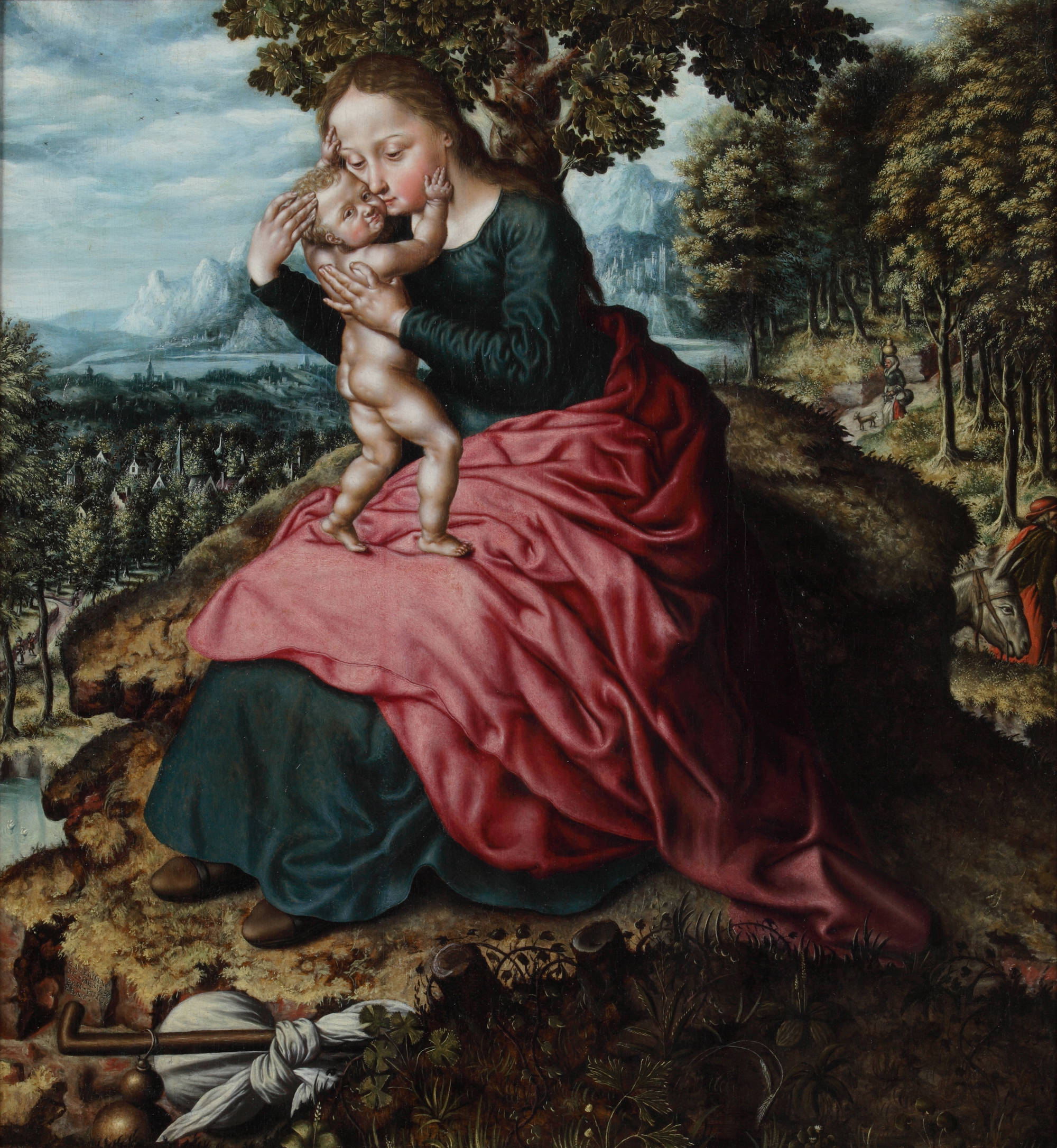The painting
Deep in the forest we see Mary holding her child, the baby Jesus, in her arms. We are witness to a tender moment between mother and child as they rest on their journey. In most paintings, you see Mary wearing a blue dress. This is also the case here and she has laid her red cloak over her lap to keep her warm.
Only as you look for longer do you notice that they’re not alone: Joseph, Mary’s husband, and their donkey are standing on the right, behind the rocky outcrop. Van Hemessen painted the landscape with great care and in meticulous detail. She treats us to a magnificent view of mountains, colourful surroundings and winding paths that lead you to a secluded village with a church tower in the distance. It’s almost like a fairy tale, but nothing could be further from the truth: the family has fled Bethlehem and are on their way to Egypt. An angel has warned them that Herod is looking for the child and wants to kill him.
This Bible story was a popular subject for painters. Endless versions and variations of the Rest on the Flight into Egypt were made. It offered artists lots of possibilities: the opportunity to show a loving moment between mother and child, as well as the chance to paint a beautiful landscape. The special thing about this painting by Van Hemessen is that the child is mischievously looking out at us while Mary kisses him.




